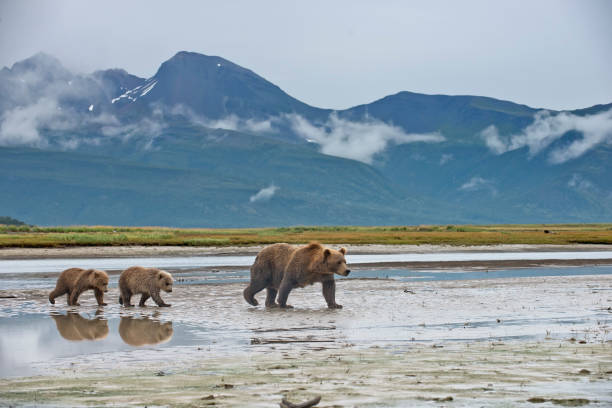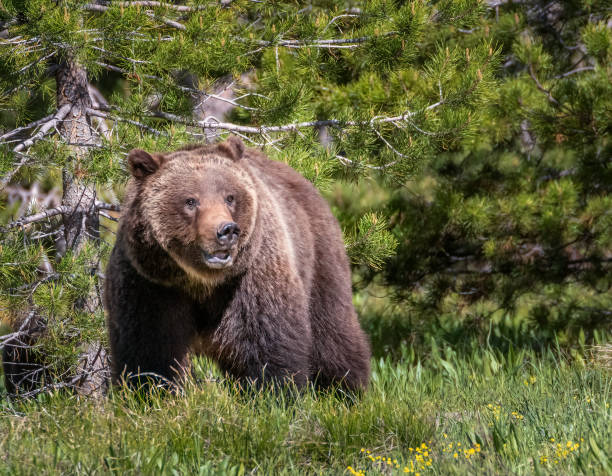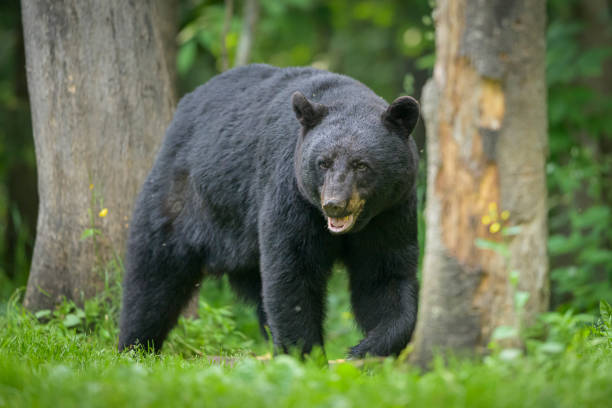Roaming the Wild: North America’s Iconic Carnivores
North America is a vast and diverse landscape, home to some of the continent's most formidable and captivating carnivores. From the powerful grizzly bear to the elusive mountain lion, each species plays a crucial role in maintaining the delicate balance of their ecosystems. Join us as we explore the wild side of North America and uncover the most fascinating facts about these iconic predators.

1. Grizzly Bear: Lords of the Rockies

Habitat:
Grizzly bears, with their awe-inspiring presence, are the undisputed lords of the Rocky Mountains. These colossal creatures thrive in remote, mountainous regions, embracing the challenges of their rugged environments.
Diet:
Despite their imposing size, grizzlies are omnivores with a taste for both flora and fauna. From feasting on fish in pristine mountain streams to ambushing small mammals, their diet showcases their adaptability and hunting prowess.
Behavior:
Solitary by nature, grizzly bears are known for their strength and aggression, especially when protecting their cubs or territory. Encounter with these majestic beings is a humbling experience, highlighting their dominance in the wild.
2. American Black Bear: The Colorful Forager

Habitat:
Contrary to their name, American black bears are not always black. These adaptable creatures can be found in a variety of habitats, from dense forests to tranquil swamps and lofty mountains.
Diet:
Embracing an omnivorous lifestyle, black bears showcase their culinary versatility. Berries, nuts, and the occasional fish or small mammal make up their diverse menu, while their climbing abilities provide them a unique advantage.
Behavior:
Timid yet resourceful, black bears often retreat to the safety of trees when faced with threats. Their color variations, ranging from black and brown to cinnamon and blonde, add a touch of vibrancy to North America’s wilderness.
3. Gray Wolf: Apex Predators in Harmony

Habitat:
Once on the brink of extinction, gray wolves are making a triumphant comeback in North America. These apex predators now grace a variety of habitats, from the dense forests of the Pacific Northwest to the vast tundras of the Arctic.
Diet:
Wolves, as apex predators, play a crucial role in maintaining ecosystem balance. Their diet, consisting primarily of ungulates like deer and elk, influences the distribution and behavior of prey species.
Behavior:
Highly social animals, wolves thrive in packs led by an alpha pair. Their haunting howls, echoing through the wilderness, serve as a testament to their intricate communication and cooperative hunting strategies.
4. Coyote: The Urban Survivor

Habitat:
Adaptable and resilient, coyotes have become a familiar sight in urban, suburban, and rural landscapes across North America. Their ability to thrive in diverse environments showcases their versatility.
Diet:
Coyotes are opportunistic omnivores, scavenging and hunting with equal finesse. Their diet includes small mammals, birds, fruits, and even human-produced food, illustrating their ability to exploit various food sources.
Behavior:
Known for their vocalizations, including yips and howls, coyotes are both solitary hunters and family-oriented. Their adaptability to human-altered environments reflects their skill in navigating the challenges of the modern world.
5. Mountain Lion: Stealthy Shadows of the Wilderness

Habitat:
Also known as cougars or pumas, mountain lions are the masters of varied landscapes. From dense forests to arid deserts, these solitary cats navigate diverse terrains with stealth and grace.
Diet:
As solitary predators, mountain lions primarily prey on deer, showcasing their expertise in stalking and ambushing. Their selective hunting contributes to the regulation of prey populations.
Behavior:
Elusive and preferring to avoid human contact, mountain lions are excellent climbers and swimmers. Their ability to adapt to different environments emphasizes their status as elusive shadows of the wilderness.
These iconic carnivores are not merely inhabitants of North America; they are guardians of the wild, shaping ecosystems and contributing to the intricate tapestry of the continent’s biodiversity. As we venture into the heart of North America’s untamed landscapes, let us appreciate the majesty and importance of these incredible predators. Their stories unfold in every rustle of leaves and echo through the mountains, reminding us of the untamed beauty that defines our continent.










